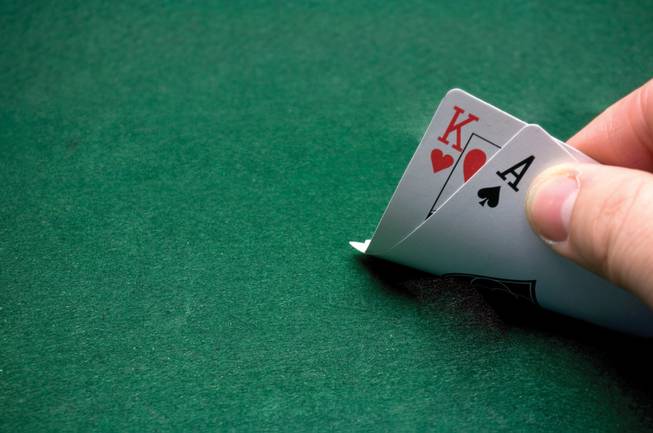
Although 6-5 blackjack is becoming more prevalent in Las Vegas casinos, mathematician Michael Shackleford says to look for the full 3-2 payout on a winning blackjack.
Friday, May 5, 2017 | 2 a.m.
Michael Shackleford is a gambling aficionado and a mathematician. As the owner of the The Wizard of Odds website, the former actuary and adjunct professor of casino math at the UNLV has spent countless hours calculating the odds and figuring out strategies for most of the games in casinos in Las Vegas and around the country.
Shackleford says the biggest misconception people have about blackjack occurs when every player at a table loses. More often than not, they’ll blame the player on third base — the last person to make a decision at the table — for their loss.
“The fact of it is, no matter how the last player to act plays their hand, it is just as likely to help as to hurt the table,” Shackleford said. “People have a selective memory and only remember the things that fit the paradigm that they believe in. If the dealer pulls a 21, they like to point at someone to blame for it and I think that’s the psychology of why this myth exists.”
So, don’t make the last player the excuse for your loss and pay attention to Shackleford’s five tips for doing better at blackjack (on his website he offers strategies for many blackjack variants).
Never play 6-5 blackjack. Always insist on the full 3-2 on a winning blackjack. The cost of playing 6-5 blackjack is an increase in the house edge of 1.4 percent, all other things being equal.
Traditionally, Vegas blackjack games offered 3-2 payouts for blackjacks, when a winning bet of $10 pays $15. Several years ago, however, casinos started offering 6-5 payouts, when a winning $10 returns $12.
Shackleford said most of the time it will say right on the felt of the table if it’s a 6-5 or 3-2 game or there might be a sign stating the rules. If that fails, ask the dealer.
Never take insurance. This includes taking “even money” with a blackjack against a dealer ace. The house edge of insurance is 7.4 percent.
The insurance and even-money bets are side bets that appear to help the player reduce possible losses. Shackleford says all blackjack tables all offer the insurance bet but games that pay 6-5 don’t offer the even-money bet.
Surrender 16 against a 10, if allowed. Most players don’t seem to even know about the surrender rule. The most valuable time to invoke it is with a total of 16 against a dealer’s 10.
According to Shackleford’s website, there are two kinds of surrender rules, early and late. In early surrender a player can forfeit a hand and cut their bet in half before the dealer checks for blackjack. In late surrender, the player can surrender a hand and halve a bet after the dealer checks for blackjack.
Look for a sign stating the rules, or ask the dealer.
Don’t forget the soft doubles. A good rule of thumb is to double soft 13 to 18 against a medium dealer card of 4 to 6.
Doubling down means doubling your initial bet after you’ve received your two cards. In this case, a soft 13-18 means your two cards add up to somewhere between 13 and 18 and one of the cards is an ace. If that’s your hand, and the dealer has one card from 4 to 6, Shackleford says double your bet.
But of course there are exceptions. For example, the player should not double soft 13 or 14 against a 4. There are also some soft doubles this rule of thumb doesn’t cover.
Never make side bets. They are all sucker bets, with a house edge up to 20 percent.
Side bets are increasingly popular on many casino table games, including blackjack. Shackleford’s advice is to avoid them all. “I’ve analyzed hundreds of them,” he said. “And I would classify all of them as sucker bets.”

Join the Discussion:
Check this out for a full explanation of our conversion to the LiveFyre commenting system and instructions on how to sign up for an account.
Full comments policy